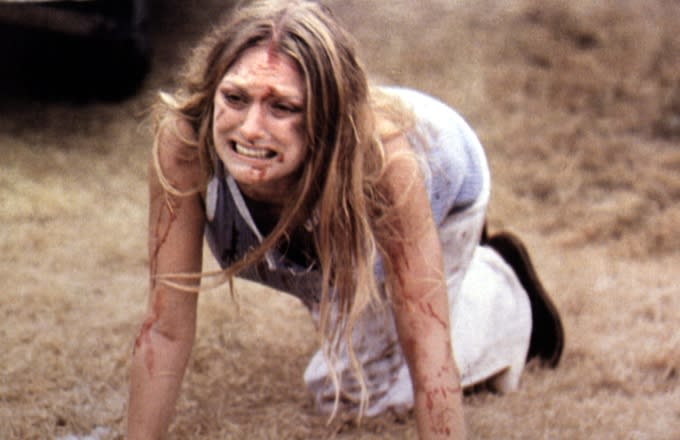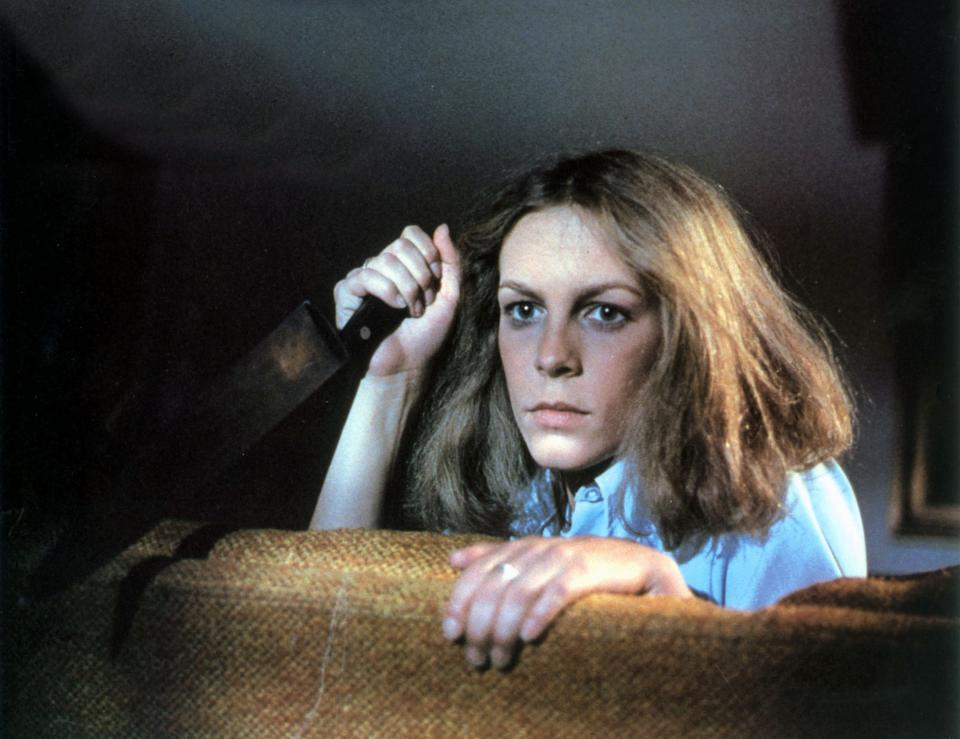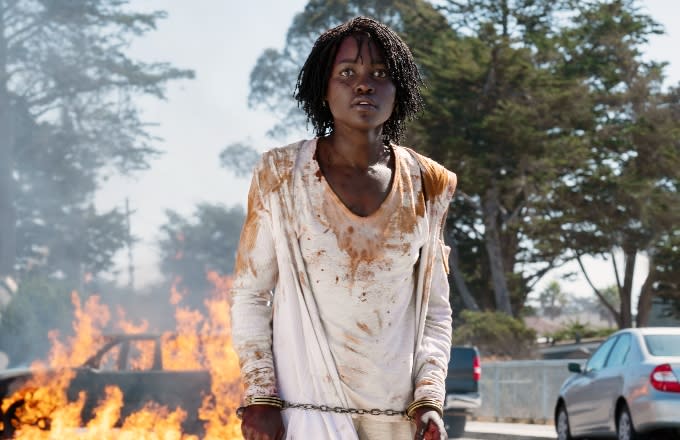The Final Girl Isn't Who You Think She Is

- Oops!Something went wrong.Please try again later.
- Oops!Something went wrong.Please try again later.
We know a final girl when we see her in a horror movie — she’s young, chaste, and often coded with a moral superiority that differs from her cohort. But since the days of The Texas Chainsaw Massacre and Halloween, the final girl trope has manifested in all sorts of complicated and compelling characters that subvert the original definition, growing far beyond the rigid archetype. From films like Midsommar to The Witch, and even Get Out, contemporary characters who fit the final girl mold are alive and well, and they’re breaking horror genre stereotypes. Here, we chart where the final girl trope started, when it began to change, and how it’s employed now.
Originally coined by Carol J. Clover in Men, Women & Chainsaws: Gender in Modern Horror Film, the final girl was identified as a central character in the horror and slasher movies of the ‘70s and ‘80s. As observed by Clover, this young woman or teen usually had a final standoff with the main villain of the film and was the only survivor of the story. Outside of the character’s arc, the final girl often demonstrated some form of moral superiority — usually by way of her purity. Fortunately, that’s been one of the most notable changes to the final girl trope (but more on that later).
More from SheKnows

When we look back at the earliest manifestations of the final girl, we can point to Sally Hardesty in 1974’s The Texas Chainsaw Massacre and, of course, Laurie Strode in 1978’s Halloween. Throughout both films, Sally and Laurie evade evil, surviving Leatherface and Michael Myers through sheer will. With Sally, her tale is one of escaping a crazed cannibalistic family in the Texas sticks. Her eventual escape following a truly frightful night features one of the most iconic moments in horror movie canon. But when we look at the final girl’s characteristics beyond her circumstances, Laurie Strode is the go-to example.
While her pals are off having sex or flirting with their significant others, Laurie tends to her babysitting duties and forgoes any late-night rendezvous. There’s the chaste quality Clover highlights in her text. She’s also slightly more aware than her friends, always looking around corners, picking up that anything odd isn’t a coincidence, but has a darker intent. Similar to Laurie, Alice of 1980’s Friday the 13th features the same quality Clover observes in her definition, abstaining from sex unlike her fellow summer camp counselors.

Click here to read the full article.
As we moved out of the ‘70s and ‘80s and into the ‘90s and early aughts, the final girl trope became more pliable. Wes Craven’s 1996 horror movie Scream subverts and plays with a number of genre tropes, including the very idea of the final girl. With Neve Campbell’s Sidney Prescott, we get a deviation from the original concept. In the film, Sidney doesn’t abstain from having sex, and she still survives. From Scream onwards, the final girl trope starts to really pivot. And within the last few years, we’ve seen several new manifestations of the final girl trope that go beyond its initial definition.
In the same way Scream toyed with the genre’s conventions, films like 2014’s It Follows continue to subvert and expand the final girl trope. Even if it’s not what screenwriter and director David Robert Mitchell intended, It Follows feels like a referendum on one of the signifiers of the final girl archetype. In the film, Jay Height (Maika Monroe) is haunted by a specter after having sex with someone. The only way she can evade the murderous, shapeshifting entity is by passing it to someone else. Although Jay’s status as a final girl is up for debate — the entity only comes after her instead of her group of friends — It Follows not only provides a reading on the anxieties teens experience during and in the anticipation of their first sexual encounters, but also interrogates the moral compass the horror genre has spun for years.

In the last 10 years alone, the final girl trope has gone through a true metamorphosis. These final girls are no longer constrained by the thematic pigeonhole of remaining chaste and moral in order to survive. Indeed, these women are badass survivors who even turn a vindictive streak on those who try to harm them. Films like Ready or Not take the final girl trope and turn the archetype into a character who forces her way out of the fresh hell she finds herself in — stuck with her murderous in-laws after her ritualistic wedding.
Us sees the ruthless, shocking twist on the final girl trope as the truth about Lupita Nyong’o’s Adelaide/ Red is revealed; Midsommar watches Florence Pugh’s Dani descend into madness and literally burn those who’ve cast her aside; and in The Witch, audiences see Thomasin (Anya Taylor-Joy) choose to live deliciously (if you know, you know). The conventions of the final girl trope can even be attributed to characters like Daniel Kaluuya’s Chris Washington, as he survives and has a final confrontation with his racist girlfriend and her equally horrifying family in Get Out. Other horror entries, like recent films Pearl, Suspiria, and even the continuation of Laurie Strode’s story in the resurrected Halloween franchise, continue to see the conventions of the final girl as more malleable than decades before.
These iterations of the final girl are fighting back. And even if she gets out bloody and bruised, she’s still the last one standing. Let it be known: the final girl is alive and well.
Best of SheKnows
16 Photos of Bill Clinton & Hillary Clinton’s Family of Three Over the Years
36 Photos of Michael Jackson's 3 Kids 'Bigi', Prince, & Paris Jackson Over the Years
Sign up for SheKnows' Newsletter.
For the latest news, follow us on Facebook, Twitter, and Instagram.


